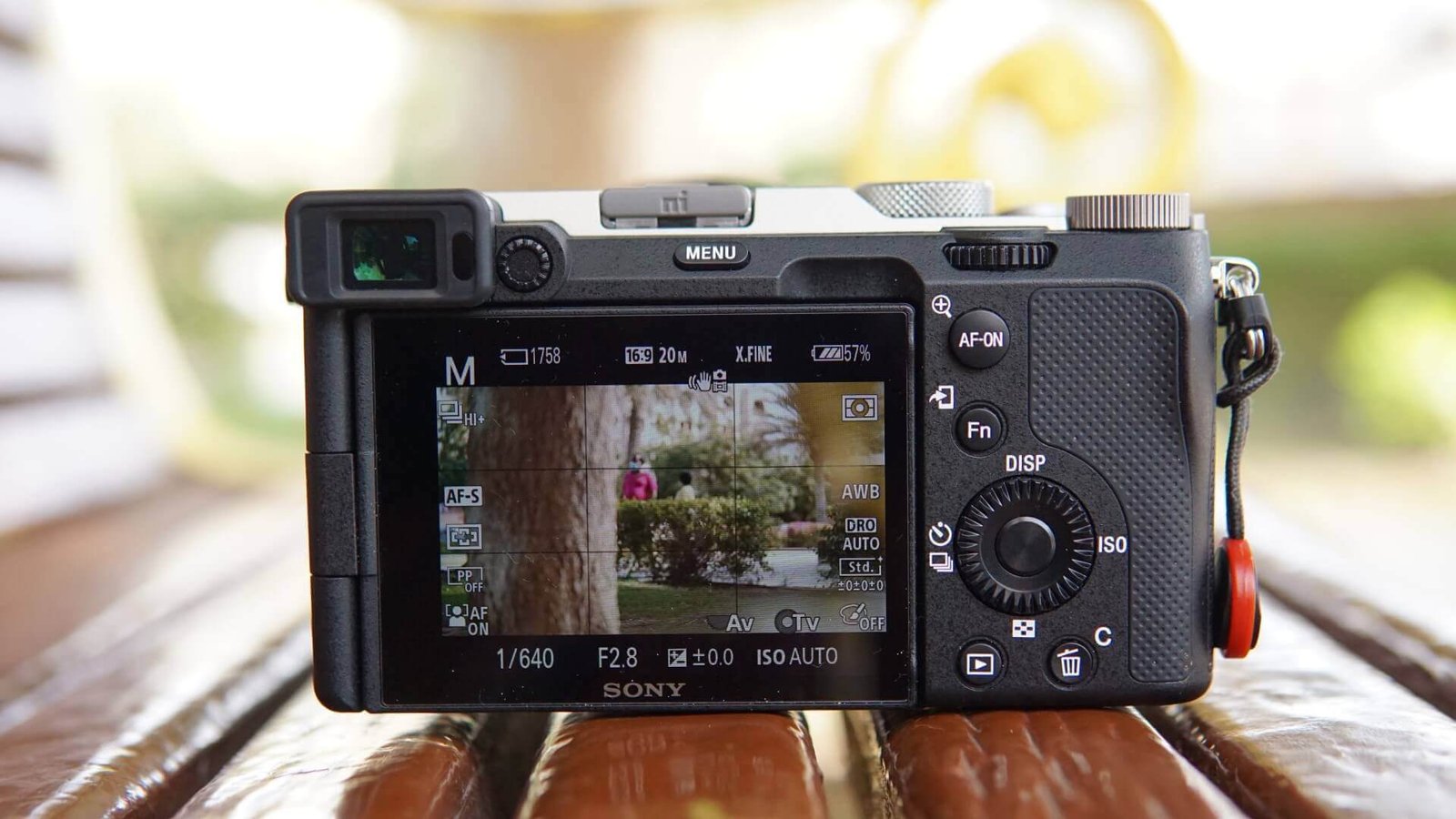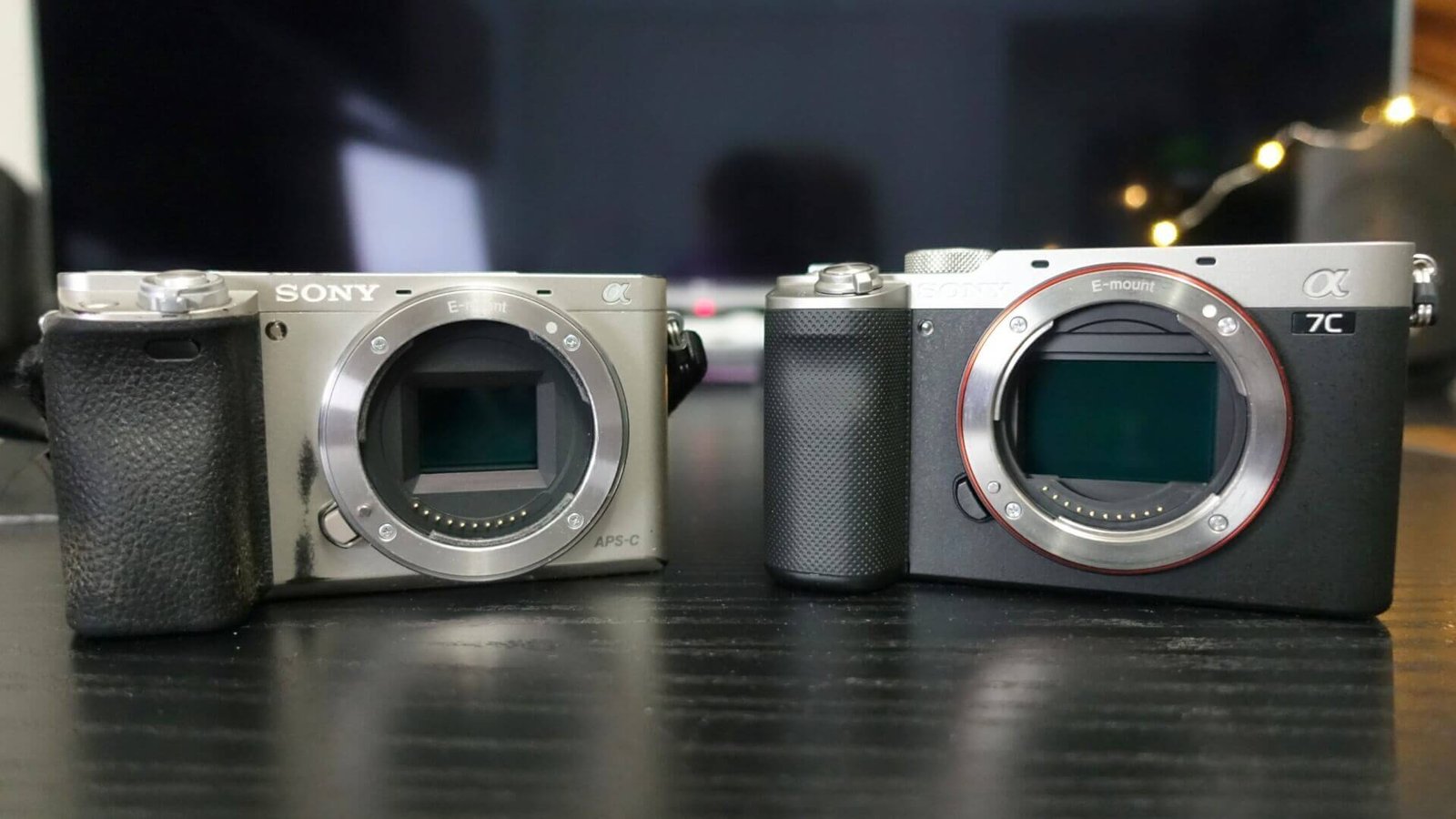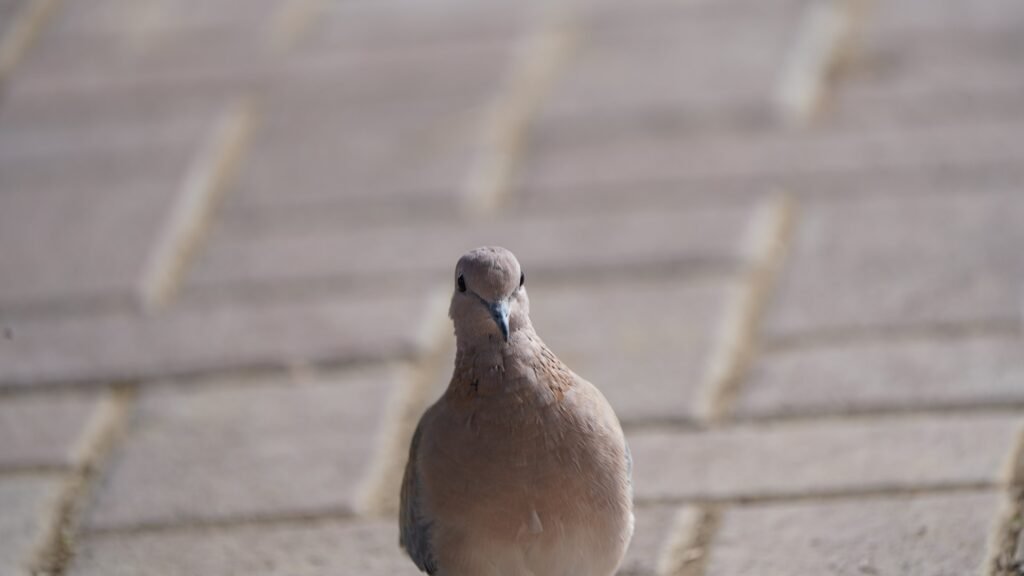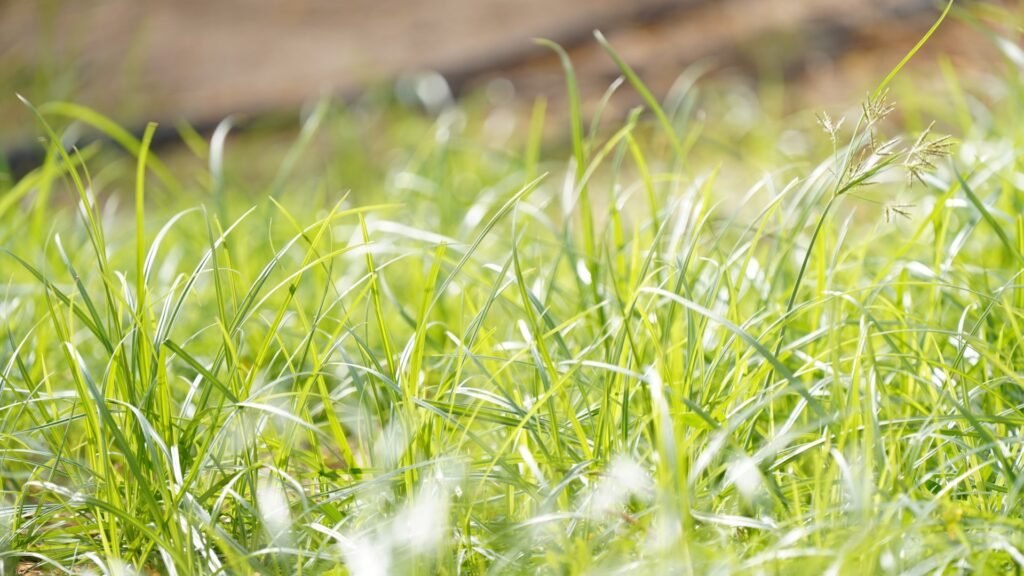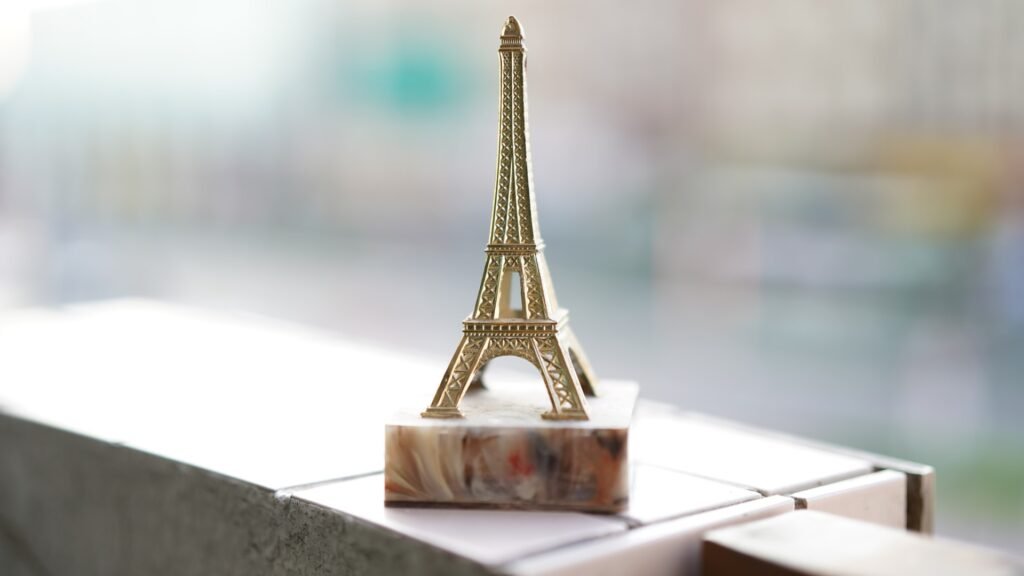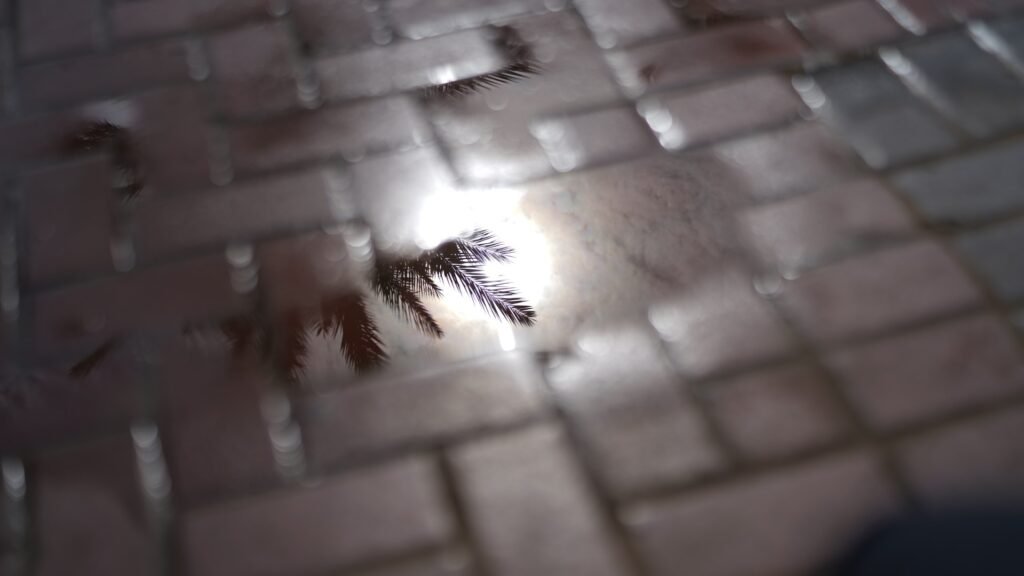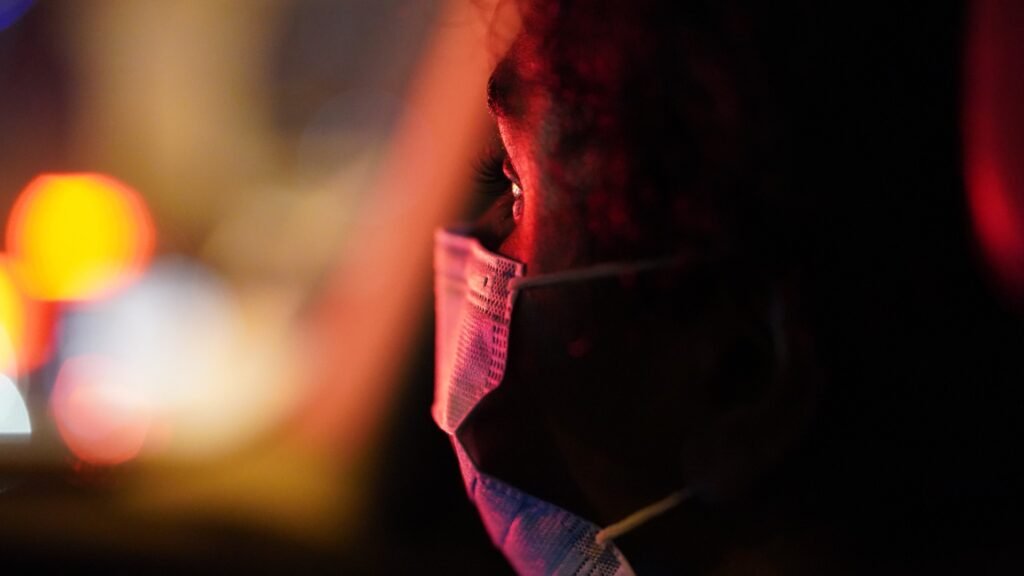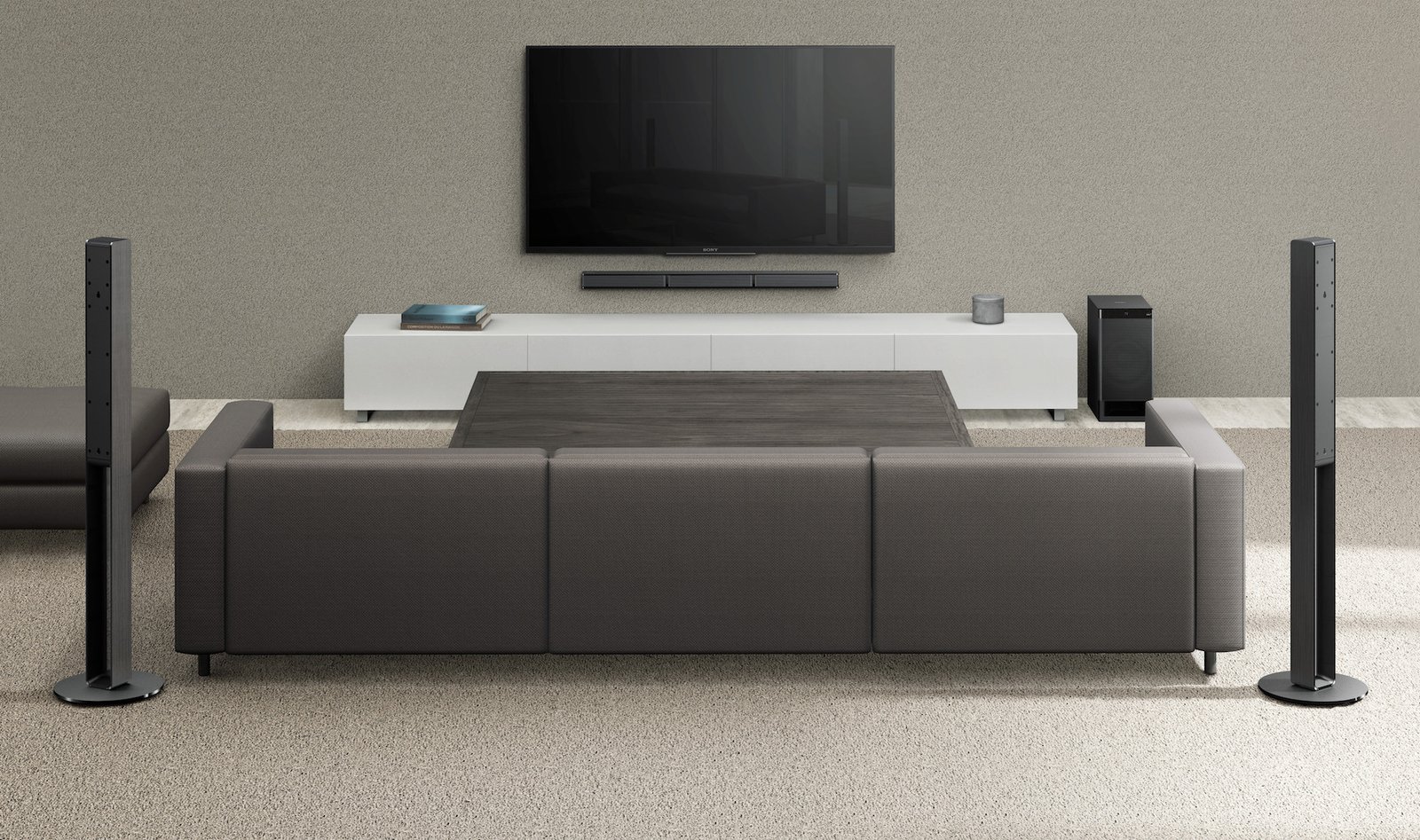When it comes to professional full-frame cameras, Sony is still one of the best in the market, offering different models for photographers of different preferences. Whether you are looking for a high-speed camera that can catch up with fast-moving objects, a camera that has very high-megapixels, another for the best low-light performance, or an affordable model that is accessible for many users, Sony has got you covered. The company had recently released a full-frame camera that resembles the design of the A6000 series APS-C model. We got to review the latest Sony Alpha A7C mirrorless camera and here are our thoughts about the new compact full-frame shooter.
Design
 It’s been almost seven years since Sony introduced its first-generation A7 series of full-frame cameras, and since then the company has followed a similar metro-styled and black colored design philosophy throughout all its generations. Over a year ago, I had thought of why Sony couldn’t release a full-frame camera in the body of the A6000 series camera. I have even seen such thoughts shared by other photographers in the Sony Alpha community since Sony isn’t really focusing on its APS-C line-up as they do with their full-frame cameras. And today, we are looking at a compact interchangeable full-frame mirrorless camera that also comes in silver and black colors. We got the silver Sony A7C for review and it looks amazing. We are sure many APS-C shooters would wish to switch to full-frame just for the portability and the color option of the A7C.
It’s been almost seven years since Sony introduced its first-generation A7 series of full-frame cameras, and since then the company has followed a similar metro-styled and black colored design philosophy throughout all its generations. Over a year ago, I had thought of why Sony couldn’t release a full-frame camera in the body of the A6000 series camera. I have even seen such thoughts shared by other photographers in the Sony Alpha community since Sony isn’t really focusing on its APS-C line-up as they do with their full-frame cameras. And today, we are looking at a compact interchangeable full-frame mirrorless camera that also comes in silver and black colors. We got the silver Sony A7C for review and it looks amazing. We are sure many APS-C shooters would wish to switch to full-frame just for the portability and the color option of the A7C.
Sony has originally designed the new A7C as a compact full-frame camera for vloggers. Now when we say compact, it isn’t about being a pocketable camera, but how smaller and lighter it is compared to all the other full-frame mirrorless cameras that Sony offers. Of course, there was the Sony RX1 fixed-lens full-frame camera that is yet to receive a new iteration. In all honesty, when I kept the A7C next to my good old silver A6000 camera, it was quite hard to distinguish at first glance. The Sony A7C weighs only 509g if you are counting the included battery too. On the contrary, the Sony A7III camera weighs 650g. The new camera features a sturdy dust and moisture body construction, where high-rigidity magnesium alloy is used on the top, the front, and the rear side. Sony does mention that the camera does have its own sealing to protect the entry of dust and moisture at a certain margin, but it is not guaranteed to offer 100% protection.
The top portion of the A7C is not so different as compared to most of the Sony mirrorless cameras. You get the exposure dial on the right end of the camera’s top side, along with the mode dial next to it and a dedicated video recording button that is located in between the exposure dial and the power/shutter button. The positioning of the video recording button is very conveniently placed and is easy to reach with our index finger. The older Alpha mirrorless cameras had its video recording button placed on the rear side. The control dial placed on the rear side of the camera. There is a horseshoe in the middle, and as you would have noticed, there is no pop-up flash on the top. Since its a professional “vlog” camera, Sony knows that videographers or photographers would depend on external flash modules for better performance. We noticed that there is a lump in between the mode dial and the horseshoe.
Looking at the right side of the device, Sony has improved the covers that close the ports. The covers do not dangle loosely as some cheap construction when opened as seen on previous models. You get the microphone port on the top, followed by the single SD card slot when moving downwards, along with the headphone jack on the bottom, the HMDI micro port, and the USB Type-C port. The single SD card slot supports up to UHS-II memory cards. It’s odd to see a Sony full-frame mirrorless camera having a single SD card slot. But we aren’t really surprised as the A7C is basically an A6000 series camera with a full-frame image sensor. And up until now, there has been no recent A6000 series cameras with dual-SD card slots. We hope Sony brings dual-SD card support for future iterations of the A7C series. The USB Type-C port is meant for charging and connecting to a PC. We also noticed that Sony has placed the microphone and headphone port far apart from each other.
On the rear side of the Sony A7C, you get the usual set of buttons such as the function key, the AF-On button, the control dial, and the delete and playback buttons on the right side. Sony has oddly placed the menu button in the middle of the rear side, right above the screen. To be honest, it’s not a very good place to have the menu button as it’s a bit hard to reach with our fingers when needed. We have come across many times where we had to stretch our fingers to reach the button so to change some settings. And if you haven’t noticed by now, the Sony A7C only has one customizable button on the rear side and there is no joystick too. While many users may not like this, Sony may have gone with this route since the device is primarily focused to work as a vlogging camera. There is the electronic viewfinder that features a 0.39-inch XGA OLED viewfinder, along with a diopter adjustment sitting next to the screen. While the viewfinder is smaller than most A7 series of cameras, the electronic viewfinder is good enough to serve the purpose but not the best around.
And now comes one of the main features of the Sony A7C. It’s the LCD TFT screen that features an articulating design instead of the normal flip screen. Sony took the design straight from its smaller Sony ZV1 vlogging camera and its impressive Sony A7SIII full-frame camera. And it makes sense for Sony to use the articulating screen design for a vlogging camera that packs a full-frame sensor. The display is 2.95-inch in size and features 921,6000 dots of screen resolution, along with touchscreen functions such as touch to focus, touch to track subjects, touch shutter, etc. As for the adjustable angles. the display can rotate horizontally up to 176-degrees and can vertically rotate up to 270-degrees. Unfortunately, the A7C does not get the new and revamped menu system seen on the Sony A7SIII.
It’s definitely a game-changer for videographers and a must-have feature for video bloggers out there. However, I did notice that when the screen is set facing towards you from the front side while you record videos of yourself, and if you are using any microphone or headphone connections, the wires can certainly get in the way while you see the screen. While the Sony A7C is marketed as a vlogging camera, we think that the camera is a whole lot more than that. As I have mentioned at the starting of the review, the sheer compact size of the Sony A7C will attract a lot of photographers who would want a smaller camera that is easier to carry and travel around. We are also well aware of the fact that there are many Sony APS-C camera owners who would not want to go full-frame since all the Sony A7 and A9 series of full-frame mirrorless cameras are bigger than the Sony A6000 series shooter. The release of the new Sony Alpha A7C would certainly grab the attention of many of those photographers.
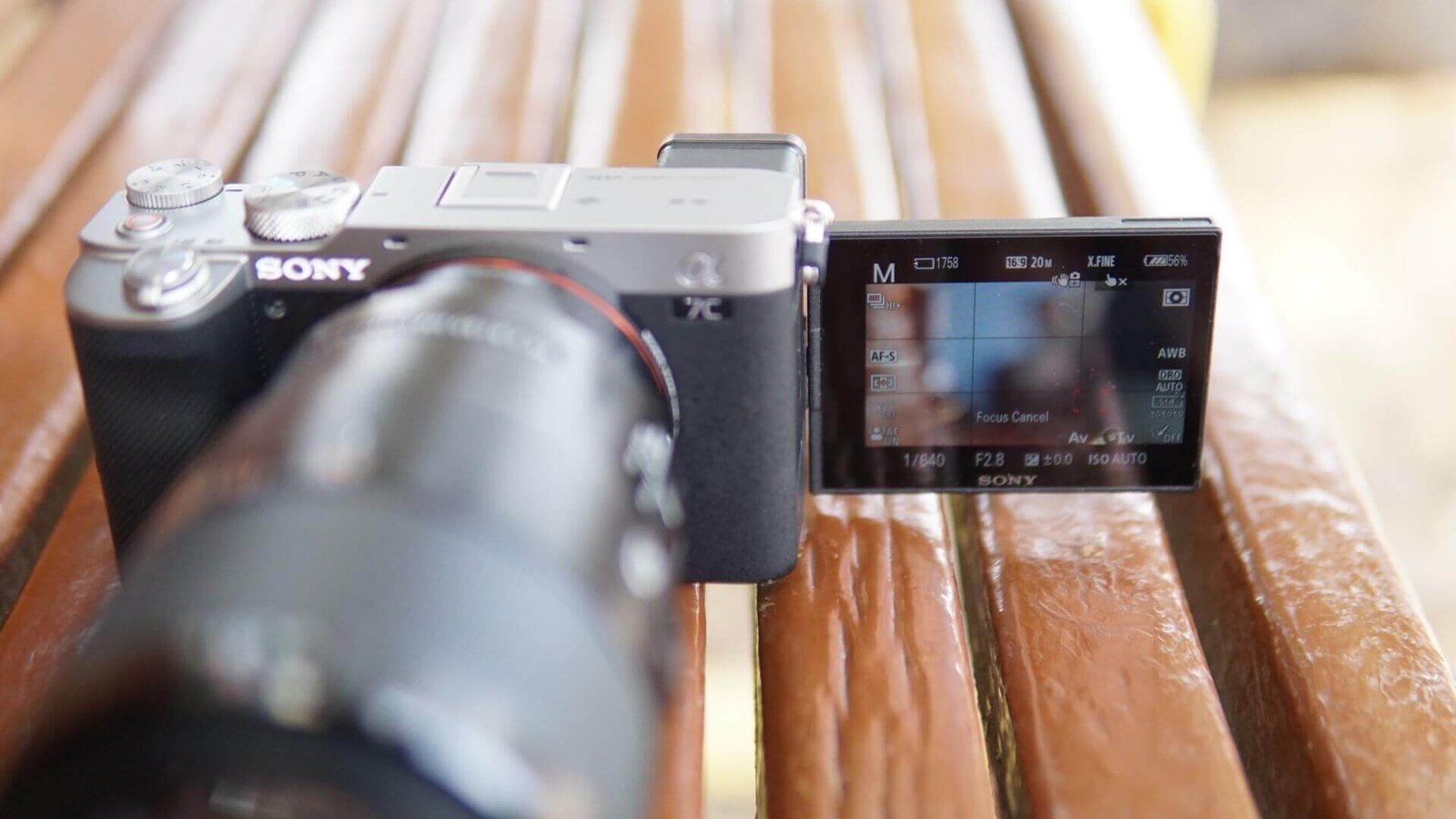 On a personal note, for the last 5 years, I have been using my Sony A6000 camera for product photography, wildlife and bird shots, street photography, astrophotography, party shots, and more. While I had enjoyed using the A7C, thanks to its small size, I did feel a bit of discomfort while using the display. Don’t get me wrong here, I’m not talking anything bad about the display. You see, all these times, Sony’s mirrorless APS-C shooters have always featured the normal semi-flip screens. And for the types of photography that I mentioned above, having the normal flip screen is a more practical choice. All we need to do is flip the display when viewing from the top. But in the case of the fully articulating screen, I have to open the display and spin it all around to face it towards me. I’m sure many sports, wildlife, or nature photographers who have been using the Sony A6000 series bodies will agree to this. The articulating screen is more suited for those who capture videos. As I mentioned, this is just my own personal opinion and it will certainly differ from person to person. Regardless, the articulating screen design is better suited for vlogging or videography purposes, and the A7C and its compact size is a good choice.
On a personal note, for the last 5 years, I have been using my Sony A6000 camera for product photography, wildlife and bird shots, street photography, astrophotography, party shots, and more. While I had enjoyed using the A7C, thanks to its small size, I did feel a bit of discomfort while using the display. Don’t get me wrong here, I’m not talking anything bad about the display. You see, all these times, Sony’s mirrorless APS-C shooters have always featured the normal semi-flip screens. And for the types of photography that I mentioned above, having the normal flip screen is a more practical choice. All we need to do is flip the display when viewing from the top. But in the case of the fully articulating screen, I have to open the display and spin it all around to face it towards me. I’m sure many sports, wildlife, or nature photographers who have been using the Sony A6000 series bodies will agree to this. The articulating screen is more suited for those who capture videos. As I mentioned, this is just my own personal opinion and it will certainly differ from person to person. Regardless, the articulating screen design is better suited for vlogging or videography purposes, and the A7C and its compact size is a good choice.
I have some high-quality FE lenses with me and tried the Sony FE 90mm F2.8 and the Sony FE 200-600mm lens with the Sony A7C. While the Sony FE 200-600mm zoom lens is quite big in size, I didn’t feel discomfort in using it with the Sony A7C and was able to hold the combo without much stress. And since I’ve also been using FE lenses with Sony APS-C mirrorless bodies, using the A7C gave me a very familiar experience. I also had rented the Sony ZEISS FE 50mm F1.4 from Gearbox AE for a day to try with the camera.
Specifications
At the heart of the Sony A7C is a 24.2MP Exmor R BSI CMOS full-frame image sensor. It’s the very same sensor that is used on Sony’s all-rounder Sony A7III full-frame shooter, which is popular for its affordable price and low-light performance. So it is an obvious fact you are going to get a similar image performance as the A7III. The full-frame image sensor is backed by the BIONZ X image processor to help produce images with lower noise and better color and accurate skin tones. The image sensor is capable of collecting more light and up to 15-stops of dynamic range.
The Sony A7C features an ISO performance that ranges between 100-51200, and when in expanded mode, it ranges from ISO 50 to ISO 204800. The ISO is the same for videos, but when in the expanded range, the camera offers ISO only up to ISO 102400. Sony mentions that the A7C features a mechanical shutter capability from 1/4000 to 30s and an electronic shutter capability from 1/8000 to 30s. Regarding videos, the shutter speed is from 1/4000 to 1/4. The camera also offers silent mode shooting. And like all the other Sony full-frame cameras, the A7C features 5-axis sensor-shift image stabilization to reduce blurs and shakes while snapping images. It isn’t a lot of help while capturing videos though and you would need a gimbal for stable videos. That said, the 5-axis IBIS offers up to 5-stops of compensation.
The Sony A7C is capable of continuous burst shots up to 10fps. On one go, the Sony A7C can fire up to 215 shots until the buffer cache runs out with Extra Fine large image option selected. The camera can capture up to 115 RAW files or up to 86 frames when RAW and JPEG is selected until the cache runs out. Thankfully, the A7C writes on the SD card at high UHS-II speeds so the buffer can be cleared in less time. On the contrary, Sony’s APS-C mirrorless bodies have always been criticized for not having native speed support to take advantage of UHS-II memory cards. Sony has also included its famous 4D FOCUS autofocus system on the A7C, where the sensor features up to 693 phase-detection points and 425 contrast-detection points. The AF points cover almost 93% of the frame, ensuring that the image is quickly focused on with accurate precision. Additionally, users will be able to enjoy the popular Real-time Eye AF for both human and animal subjects. Other features include Bluetooth 4.1 and WiFi.
 You will be able to shoot 24MP images when the 3:2 aspect ratio is selected, along with options for 10MP and 2.6MP images. And when selecting 16:9 as the aspect ratio, the maximum image resolution is 20MP. The camera also offers the same picture effects such as toy camera, pop color, retro, partial color, rich-monochrome etc that is seen on other Sony cameras. The A7C also features support for picture profile parameters such as black level, gamma, S-Log 2, S-Log 3, Black Gamma, Knee, color mode, color phase, and more. Videos are recorded in XAVC S format with MPEG-4 AVC and H.264 compression. 4K XVAC S videos can be recorded at 30p and 24p, along with Full HD videos at 120p slow-motion, 60p, and 30p. As a vlogging camera, we hoped that the Sony A7C would have featured 4K at 60p recording. We managed to capture some images with the lenses I mentioned earlier so take a look below.
You will be able to shoot 24MP images when the 3:2 aspect ratio is selected, along with options for 10MP and 2.6MP images. And when selecting 16:9 as the aspect ratio, the maximum image resolution is 20MP. The camera also offers the same picture effects such as toy camera, pop color, retro, partial color, rich-monochrome etc that is seen on other Sony cameras. The A7C also features support for picture profile parameters such as black level, gamma, S-Log 2, S-Log 3, Black Gamma, Knee, color mode, color phase, and more. Videos are recorded in XAVC S format with MPEG-4 AVC and H.264 compression. 4K XVAC S videos can be recorded at 30p and 24p, along with Full HD videos at 120p slow-motion, 60p, and 30p. As a vlogging camera, we hoped that the Sony A7C would have featured 4K at 60p recording. We managed to capture some images with the lenses I mentioned earlier so take a look below.
Image Samples
- Sony A7C with Sony FE 200-600mm lens
- Sony A7C with Sony FE 200-600mm lens
- Sony A7C with Sony FE 200-600mm lens
- Sony A7C with Sony FE 200-600mm lens
- Sony A7C with Sony FE 200-600mm lens
- Sony A7C with Sony FE 200-600mm lens
- Sony A7C with Sony FE 200-600mm lens
- Sony A7C with Sony FE 200-600mm lens
- Sony A7C with Sony FE 200-600mm lens
- Sony A7C with Sony FE 200-600mm lens
- Sony A7C with Sony FE 90mm F2.8 Macro lens
- Sony A7C with Sony FE 90mm F2.8 Macro lens
- Sony A7C with Sony FE 90mm F2.8 Macro lens
- Sony A7C with Sony FE 200-600mm lens
- Sony A7C with Sony ZEISS 50mm F1.4 lens
- Sony A7C with Sony ZEISS 50mm F1.4 lens
- Sony A7C with Sony FE 90mm F2.8 Macro lens
- Sony A7C with Sony FE 90mm F2.8 Macro lens
- Sony A7C with Sony FE 90mm F2.8 Macro lens
- Sony A7C with Sony ZEISS 50mm F1.4 lens
- Sony A7C with Sony ZEISS 50mm F1.4 lens
- Sony A7C with Sony ZEISS 50mm F1.4 lens
- Sony A7C with Sony ZEISS 50mm F1.4 lens
- Sony A7C with Sony FE 200-600mm lens
- Sony A7C with Sony FE 90mm F2.8 Macro lens
- Sony A7C with Sony FE 90mm F2.8 Macro lens
- Sony A7C with Sony FE 90mm F2.8 Macro lens
- Sony A7C with Sony FE 90mm F2.8 Macro lens
- Sony A7C with Sony FE 90mm F2.8 Macro lens
- Sony A7C with Sony FE 90mm F2.8 Macro lens
Battery
Since the A7C is the smallest interchangeable mirrorless full-frame camera Sony has to offer, the company did not sacrifice its battery life and has included the popular FZ100 battery that is used on many of the Sony full-frame cameras. The company mentions that the A7C can last up to 680 shots when using the viewfinder and can last up to 740 shots when using the LCD monitor, according to CIPA standards. During my time with the device, the camera was able to last for a couple of days when I had used it only for still photography over hundreds and hundreds of images. Despite the limited time we had with the camera, I did try to see how long can the camera can last while recording on 4K (To test the temperatures). We used the Kingston 256GB Canvas Select Plus SD Card on the camera that we reviewed earlier. However, due to the amount of data that 4K videos consume, the memory card ran out of storage in less than half an hour so we couldn’t arrange any other way to test the recording temperatures and how long will the A7C be able to record 4K videos without any interruption. Regardless, Sony mentions that the camera can record up to 225 minutes of video time. And as we mentioned before, the USB Type-C port can be used for charging while you use the device.
Verdict
The new Sony A7C is the company’s take on offering a new form of a full-frame mirrorless camera, not just for vloggers, but also for those who would want to capture high-quality images and video in a portable form-factor. Sony had fulfilled that with the RX1 series many years ago, and since there have been no new models yet of that category, the A7C would certainly be a good choice for those who would want to switch from the RX1 series. And the same also applies to those who have been depending on Sony’s portable A6000 series APS-C bodies for years, who haven’t switched due to the large size of the mirrorless full-frame cameras. While most of the FE lenses are quite large in size, there are certainly some FE lenses from Sony that is small. For example, slapping the A7C with compact FE lenses, such as the Sony 35mm F1.8 FE lens, the Sony 85mm F1.8, or the Sony 20mm F1.8 G lens, gives the perfect compact full-frame package combo.
 We think Sony might even be trying to bring in long-term APS-C camera users to enter the full-frame market with the A7C. However, we don’t think Sony will give up on its APS-C mirrorless lineup as those cameras do have their own advantages. The Sony A7C packs most of the best Sony camera technologies seen on all the other Alpha Sony mirrorless cameras. Be it about the 5-axis image stabilization, the advanced autofocusing system, a proven full-frame image sensor that is used on the A7III, the articulating screen that will benefit bloggers, excellent ISO and shutter speed, and 15-stops of dynamic range, the A7C has got you covered. While the A7C packs only a single SD card slot, the camera is able to write content at UHS-II speeds, something that is not seen on Sony APS-C mirrorless bodies. The choice of silver and black colors is also a bonus for Sony to attract more customers. There is definitely room for improvement, such as the inclusion of a joystick on its rear side, 4K 60p video recording, the new menu system, and we hope that Sony brings these changes and more on the next Sony A7C Mark II camera.
We think Sony might even be trying to bring in long-term APS-C camera users to enter the full-frame market with the A7C. However, we don’t think Sony will give up on its APS-C mirrorless lineup as those cameras do have their own advantages. The Sony A7C packs most of the best Sony camera technologies seen on all the other Alpha Sony mirrorless cameras. Be it about the 5-axis image stabilization, the advanced autofocusing system, a proven full-frame image sensor that is used on the A7III, the articulating screen that will benefit bloggers, excellent ISO and shutter speed, and 15-stops of dynamic range, the A7C has got you covered. While the A7C packs only a single SD card slot, the camera is able to write content at UHS-II speeds, something that is not seen on Sony APS-C mirrorless bodies. The choice of silver and black colors is also a bonus for Sony to attract more customers. There is definitely room for improvement, such as the inclusion of a joystick on its rear side, 4K 60p video recording, the new menu system, and we hope that Sony brings these changes and more on the next Sony A7C Mark II camera.






